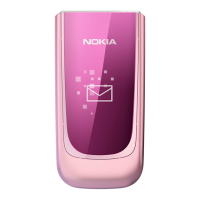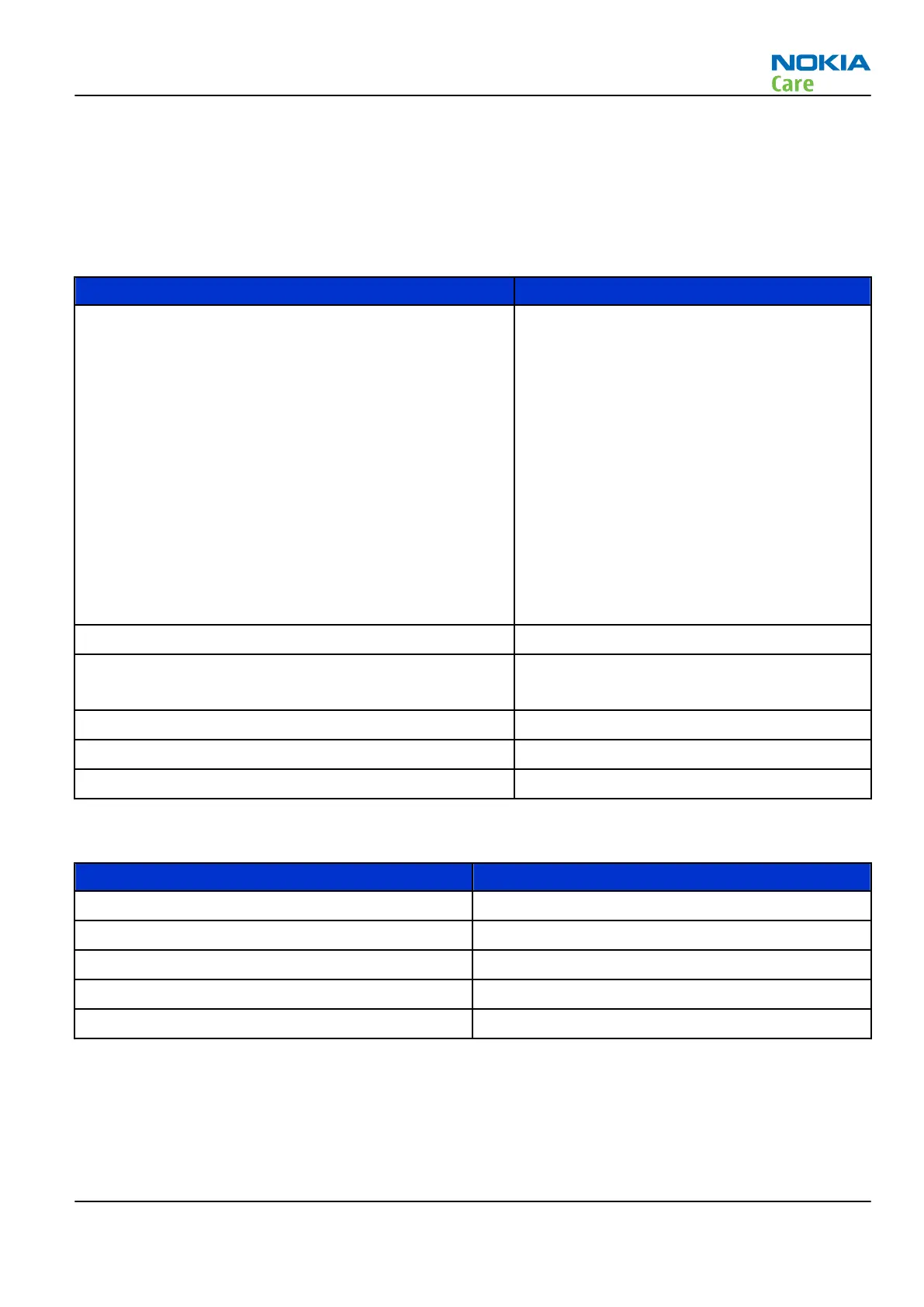The D2800 Juno (BCM21351) embedded RF transceiver subsystem is a quad-band, Class 33 EDGE capable,
implemented in the phone as Class 32. It has a low-IF receiver and a polar transmitter that requires no
transmit filters and uses a standard linear PA. The D2800 Juno has a 26 MHz integral DCXO connected internally
to the RF and PLLs with four buffered 26 MHz clock outputs. The platform only uses one of the 26 MHz clock
outputs, RF_XON.
Basic RF Features
Supported Modulation GMSK and 8PSK
Frequency Bands supported GSM850: ARFCN 128-251
- TX: 824.00-849.00 MHz
- RX: 869.00-894.00 MHz
EGSM900: ARFCN 975-1023, 1-124
- TX: 880.00-915.00 MHz
- RX: 925.00-950.00 MHz
GSM1800 (DCS): ARFCN 512-885
- TX: 1710.00 – 1785.00 MHz
- RX: 1805.00 -- 1880.00 MHz
GSM1900 (PCS): ARFCN 512-810
- TX: 1850.00 – 1910 MHz
- RX: 1930.00 – 1990 MHz
Band configurations Quad-band
GMSK Power Class Class 4 (GSM850 and GSM900)
Class 1 (GSM1800 and GSM1900)
8PSK Power Class Class E2 (All bands)
Multislot Class MSC 32
Static sensitivity level -108 dBm typical (All bands)
RF Key Components
Description Reference
Multimedia Baseband and RF ASIC - "Juno" D2800
GSM/EDGE Front-end module (Amplifier + switch) N7500
Dual GSM RX SAW filter for GSM850 and GSM900 Z7500
Dual GSM RX SAW filter for GSM1800 and GSM1900 Z7501
26 RF MHz Crystal (8 pF) B2800
GSM Receiver
The D2800 Juno BB/RF ASIC contains four low noise amplifiers (LNA), one for each band. The receiver uses a
low-IF architecture, meaning the incoming RF signal to the mixer is quadrature-down-converted to the IF
frequency.
RM-497
System Module
Issue 1 COMPANY CONFIDENTIAL Page 5 – 41
Copyright © 2010 Nokia. All rights reserved.

